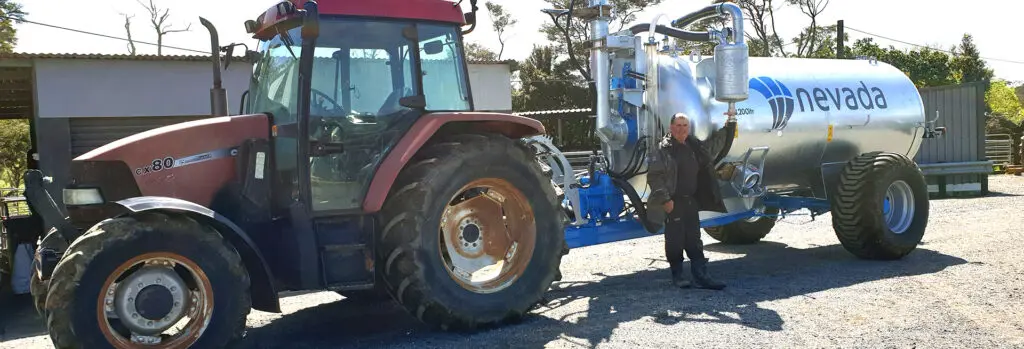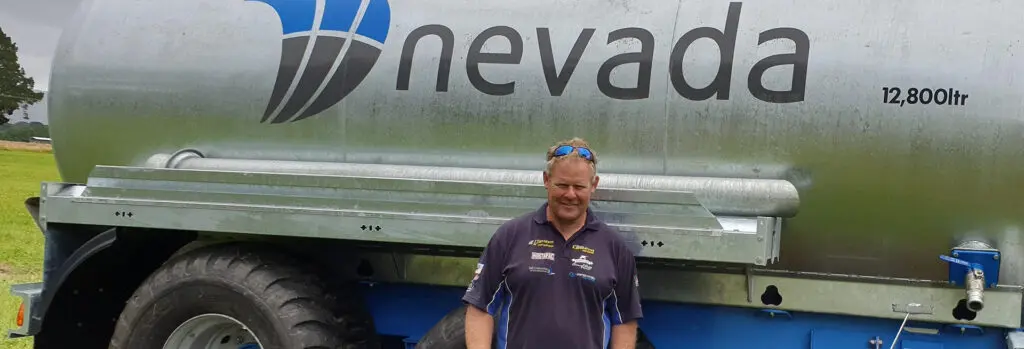Dave’s Upgrade from Discharge Consent

When discharge consents changed, Dave needed a dairy effluent system upgrade, so he gave Nevada a call….

When discharge consents changed, Dave needed a dairy effluent system upgrade, so he gave Nevada a call….

Realising the value of effluent nutrients, Paul wanted a way of spreading effluent over the rest of the farm, after some research he decided on Nevada.

Bruce needed a way to spread further across the farm, his home paddocks were becoming locked with to much nutrients, so he replaced his irritator with a Nevada Slurry Tanker.

When you’re running a slurry tanker vacuum pump overheating can cause serious damage and lead to big repair bills. Good stirring, the correct suction pipe size, and regular checks help keep your pump working at optimal levels. An overheated pump can halt productivity and lead to significant expense, so read on to follow our tips […]

1. Corrosion Resistance For a slurry tanker to last, it’s essential it is built to be corrosion resistant inside and out. While the coating on the outside protects it from the elements, the inside is even more important. Effluent is a highly corrosive material, and without a high level of corrosion resistance on the inside, […]

There’s a new attraction in the Ashburton countryside, and it’s located on Bruce Turpie’s 500Ha dairy farm…

Alan’s keeping everyone happy with his improved effluent management…

Dennis couldn’t be happier with his effluent management system…but he’s made some costly mistakes getting to this point…

As a contractor with slurry tankers in Eketahuna there’s no room for mucking around…

Going bigger was the logical choice for Darryl Hickey, with the 8in auto-fill arm he can get the job done faster with less mess …

Discover how smart effluent management turned waste into a valuable resource for Nathan on New Zealand farm.

Lawrence shares how using a Nevada slurry tanker has given him full control over dairy effluent management, improving efficiency and simplicity straight from the tractor seat.